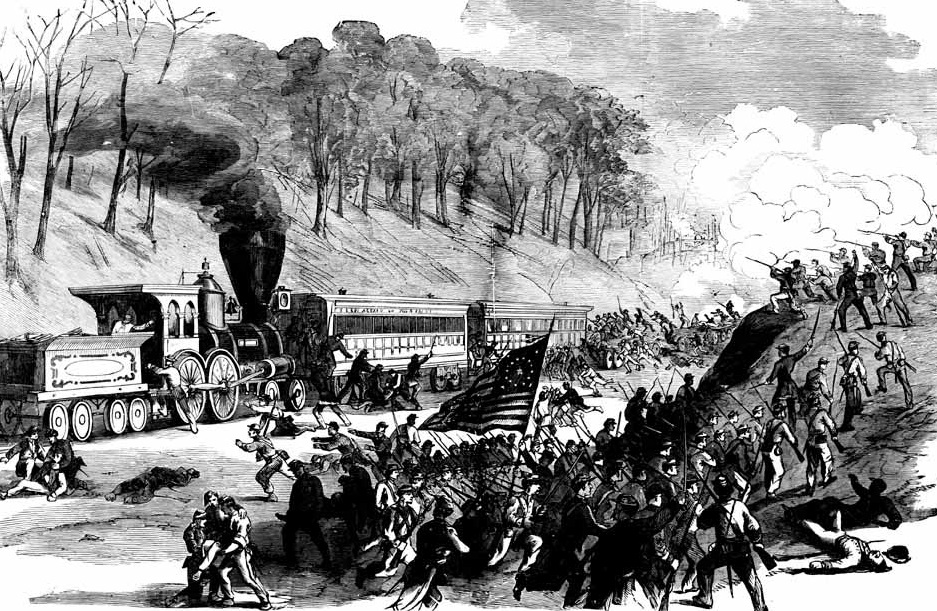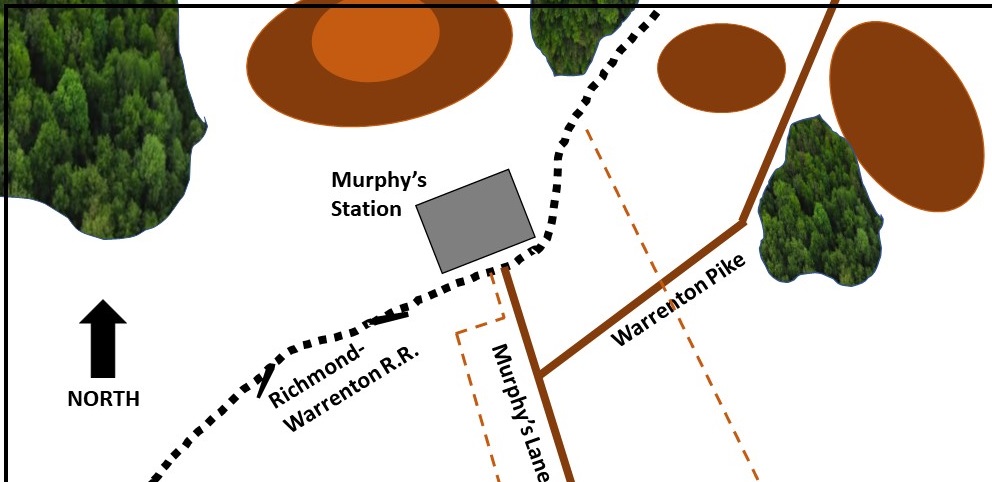The Battle of Murphy's Station - 1863
A Fictional Scenario for In Freedom's Cause


It is 1863, and the drive on Richmond is not going as the Union generals had planned. Hooker's timidity is soon to cost the US dearly at Chancellorsville, but that event lies a few days in the future. A small Union division has been ordered to advance on Murphy's Station, a depot on the Warrenton-Richmond spur. Confederate activity in the area has been reported, but their presence is expected to be minor.
Simultaneously, two Confederate brigades have been ordered to meet at the same Station, to hold a position south of what is soon to become the Chancellorsville battlefield. Again, although Union scouts have been reported in the area, no strong enemy opposition is expected. The two brigades march along separate roads to reach their assigned position at Murphy's Station.
The result is a meeting engagement. Union forces include some veterans of the fighting in 1862 (The Pennsylvania Zouaves), but most of their units - although well-trained - are no better than average. The Confederates include more Veterans amongst them, but have a slightly smaller command. Both forces will attempt to take and hold the Station.
Tha tabletop is shown below. Woods and hills are rough and will provide cover. Marching troops moving on the rail lines (black dotted lines) and roads will receive a movement bonus. The station itself will only hold a single unit of any type, providing only soft cover. The split-rail fences (brown dotted lines) are substantial structures, built on low stone walls. While serving as only a minor linear obstacle for movement, they will also provide soft cover.

Union troops will start in battle columns, anywhere up to 18 inches onto the table from the Western edge, but south of the woods. They may arrive as complete brigades, in any order.
The Louisiana Brigade will start up to 18 inches onto the table in road column from the North edge of the map, on the Warrenton Pike. The Missippi Brigade will start south of the hills and wood, up to 18 inches from the Eastern table edge, in battle column.
Each brigade is commanded by a single general.
Louisiana Zouaves: 18 Veteran infantry, Minie rifles
1st Louisiana: 18 Average infantry, Minie rifles
2nd Louisiana: 18 Average infantry, Minie rifles
3rd Louisiana: 18 Average infantry, Minie rifles
4th Polk's Rifles:18 Veteran infantry, Minie rifles
5th Texas: 18 Veteran infantry, Minie rifles
6th Mississippi: 18 Average infantry, Minie rifles
7th Mississippi: 18 Average infantry, Minie rifles
8th Louisiana Battery: 2 Sections Veteran artillery, mixed guns
1st PA Zouaves: 12 Veteran unfantry, Minie rifles
2nd PA Zouaves: 12 Veteran unfantry, Minie rifles
3rd PA State Guard: 18 Average infantry, Minie rifles
4th NY: 18 Average infantry, Minie rifles
5th NY: 18 Average infantry, Minie rifles
6th NY: 18 Average infantry, Minie rifles
7th NY: 18 Average infantry, Minie rifles
8th NJ: 18 Average infantry, Minie rifles
9th NJ: 18 Average infantry, Minie rifles
10th NY Battery: 3 Sections Average artillery, Napoleon 12#
Each brigade will be broken when half or more of its units (with the commanding general counting as a unit) are removed from play, and the brigade morale check is failed. When half or more of the brigades in an army are broken, the army must check morale. If not already in possession of the Station at this point, the game is effectively over, even if the army does not break. If either army breaks, the opposing side is the victor.